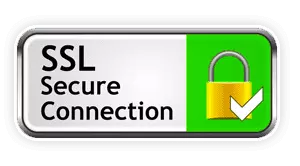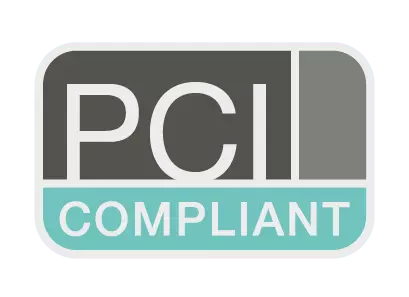John Deere 605C Crawler Loader Operator's Manual (OMT217598)
Catalog:
Model:
Price: US$ 25.00
Complete Operator's Manual for John Deere 605C Crawler Loader , with all the shop information to maintain, and operate like professional mechanics.
OMT217598 - 605C Crawler Loader Operator's Manual.pdf
OMT217598 - 605C Crawler Loader Operator's Manual.epub
PRODUCT DETAILS:
Total Pages: 332 pages
File Format: PDF/EPUB/MOBI/AZW (PC/Mac/Android/Kindle/iPhone/iPad; bookmarked, ToC, Searchable, Printable)
Language: English
omt217598 - 605C Crawler Loader - Table of Contents
Foreword
Emissions Control Warranty Statement
Technical Information Feedback Form
Section 1-1: Safety—Safety and Operator Conveniences
Safety and Operator Convenience Features
Section 1-2: Safety—General Precautions
Recognize Safety Information
Follow Safety Instructions
Operate Only If Qualified
Wear Protective Equipment
Avoid Unauthorized Machine Modifications
Inspect Machine
Add Cab Guarding For Special Uses
Stay Clear of Moving Parts
Avoid High-Pressure Fluids
Avoid High-Pressure Oils
Work In Ventilated Area
Prevent Fires
Clean Debris from Machine
Prevent Battery Explosions
Handle Chemical Products Safely
Dispose of Waste Properly
Prepare for Emergencies
Section 1-3: Safety—Operating Precautions
Start Only From Operator's Seat
Use and Maintain Seat Belt
Use Steps and Handholds Correctly
Prevent Unintended Machine Movement
Avoid Work Site Hazards
Keep Riders Off Machine
Avoid Backover Accidents
Avoid Machine Tip Over
Inspect and Maintain ROPS
Section 1-4: Safety—Maintenance Precautions
Park and Prepare for Service Safely
Service Cooling System Safely
Remove Paint Before Welding or Heating
Make Welding Repairs Safely
Drive Metal Pins Safely
Section 1-5: Safety—Safety Signs
Replace Safety Signs
Safety Signs
Section 2-1: Operation—Operator's Station
Operator's Station
Instrument Panel
Instrument Panel Switches
Instrument Panel Indicators
Instrument Panel Gauges
Hydraulic Oil Temperature Gauge
Diagnostic Display Unit (DDU)
Low Speed Range Switch
Horn Button
Emergency Travel Stop Button
Park Lock Lever
Key Switch
Windshield Wiper and Washer
Heating and Air Conditioning Controls
Working Light Switch
Operator Warning Light
Adjust Standard Suspension Seat
Adjust Air Suspension Seat—If Equipped
Operator's Manual Compartment
Dome Light
Door Latch
Window Lock
Secondary Exit
Section 2-2: Operation—Operating the Machine
Inspect Machine Daily Before Starting
Engine Break-In Period
Starting the Engine
Engine Warm-Up
Cold Weather Warm-Up
Cold Weather Start Aid
Steering the Machine
Steering the Machine—Transmission Control Lever—V-Pattern—If Equipped
Using Engine Speed Control Knob
Controlling Machine Travel Speed
Driving the Machine
Stopping the Engine
Stopping the Machine
Parking the Machine
Parking Brake
Pilot Control Lever
Using Boom Float
Using Bucket Return-to-Dig
Using Boom Height Kickout
Operating Multi-Purpose Bucket
Operating and Maintenance Undercarriage Tips
Operating in Water
Loading Machine on a Trailer
Loading Machine with Crane
Towing the Machine
Section 3-1: Maintenance—Machine
Diesel Fuel
Lubricity of Diesel Fuel
Handling and Storing Diesel Fuel
Biodiesel Fuel
Diesel Engine Break-In™ Oil
Testing Diesel Fuel
Minimizing the Effect of Cold Weather on Diesel Engines
Diesel Engine Oil
Diesel Engine Oil and Filter Service Intervals
Track Rollers, Front Idler and Carrier Roller Oil
Transmission, Hydraulic and Final Drive Seal Cavity Oil
Splitter Box Oil
Final Drive Oil
Grease
Heavy Duty Diesel Engine Coolant
Drain Intervals for Diesel Engine Coolant
John Deere COOL-GARD™ II COOLANT EXTENDER
Supplemental Coolant Additives
Operating in Warm Temperature Climates
Additional Information About Diesel Engine Coolants and John Deere COOL-GARD™ II COOLANT EXTENDER
Testing Diesel Engine Coolant
Alternative and Synthetic Lubricants
Section 3-2: Maintenance—Periodic Maintenance
Service Your Machine at Specified Intervals
Check the Hour Meter Regularly
Prepare Machine for Maintenance
Fuel Tank
Tilt Cab/Canopy (ROPS)
Fluid Analysis Program Test Kits and 3-Way Coolant Test Kit
Service Intervals
Required Parts
Section 3-3: Maintenance—As Required
Drain Water and Sediment From Primary Fuel Filter/Water Separator
Drain Water and Sediment From Fuel Tank
Check Track Sag
Adjust Track Sag
Grease Cab Door Hinges
Inspect and Clean Engine Air Cleaner Elements
Inspect Belt
Checking Track Shoe Cap Screw Torque
Check and Clean Radiator Core and Oil Cooler Core
Cleaning and Replacing Cab Fresh Air Filters
Cleaning and Replacing Cab Recirculating Air Filter
Check Coolant
Check and Clean Transmission/Hydraulic Pump and Motor Case Drain Filter
Section 3-4: Maintenance—Every 10 Hours or Daily
Check Coolant Level
Check Engine Oil Level
Check Transmission/Hydraulic System Oil Level
Check Splitter Box Oil Level
Section 3-5: Maintenance—Every 50 Hours
Grease Loader Linkage and Cylinder Pivots
Section 3-6: Maintenance—Initial Service - 250 Hours
Change Engine Oil and Filter
Section 3-7: Maintenance—Every 250 Hours
Take Engine Oil Sample
Section 3-8: Maintenance—Every 500 Hours
Change Engine Oil and Filter
Replace Primary Fuel Filter/Water Separator
Replace Final Fuel Filter
Check Battery Electrolyte Level and Terminals
Replace Transmission/Hydraulic Oil Return Filter
Change Splitter Box Oil
Check Final Drive Oil Level
Change Final Drive Oil
Check Air Intake Hose
Replace Transmission/Hydraulic Charge Oil Filter
Take Fluid Samples
Section 3-9: Maintenance—Every 1000 Hours
Check Transmission/Hydraulic Charge Oil Case Return Filters
Replace Engine Air Cleaner Elements
Check Fan Speed
Check Coolant
Section 3-10: Maintenance—Every 2000 Hours
Replace Engine Crankcase Oil Separator (If Equipped)
Check and Adjust Engine Valve Lash
Change Transmission/Hydraulic System Oil
Section 3-11: Maintenance—Every 6000 Hours
Drain and Flush Cooling System
Section 4-1: Miscellaneous—Machine
Adjust Armrest
Bleeding Fuel System
Replacing Belt
Resetting Circuit Breaker
Fuse and Relay Specifications
Replacing Fuses
Replacing Dome Light Bulb
Replacing Indicator Bulbs
Replacing Control Panel Button Bulbs
Replacing Working Light Bulb
Removing and Installing Bucket Teeth
Do Not Service or Adjust Injection Nozzles or Injection Pump
Do Not Service Control Valves, Cylinders, Pumps or Motors
Precautions for Alternator and Regulator
Welding On Machine
Welding Near Electronic Control Units
Keep Electronic Control Unit Connectors Clean
Handling, Checking and Servicing Batteries Carefully
Using Booster Batteries—24-Volt System
Using Battery Charger
Removing and Installing Batteries
Checking Air Conditioner Receiver/Dryer
Track Sag General Information
Checking and Adjusting Idler Side Play
Checking and Adjusting Idler Vertical Play
Cleaning Track Components
Do Not Service Control Valves and Cylinders
Checking Track Shoe Cap Screw Torque
Hardware Torque Specifications
Unified Inch Bolt and Screw Torque Values
Metric Bolt and Screw Torque Values
Adding Oil to Track Roller
Checking Track Carrier Roller Oil Level
Section 4-2: Miscellaneous—Operational Checkout
Operational Checkout
Section 4-3: Miscellaneous—Troubleshooting
Troubleshooting Procedure
Engine
Electrical System
Hydraulic System
Travel Gear and Track
Heating System
Section 4-4: Miscellaneous—Storage
Prepare Machine for Storage
Monthly Storage Procedure
Section 4-5: Miscellaneous—Specifications
605C Crawler Loader Dimensions
605C Crawler Loader Specifications
605C Crawler Loader Drain and Refill Capacities
Section 4-6: Miscellaneous—Machine Numbers
Keep Proof of Ownership
Keep Machines Secure
Record Product Identification Number (PIN)
Record Engine Serial Number








